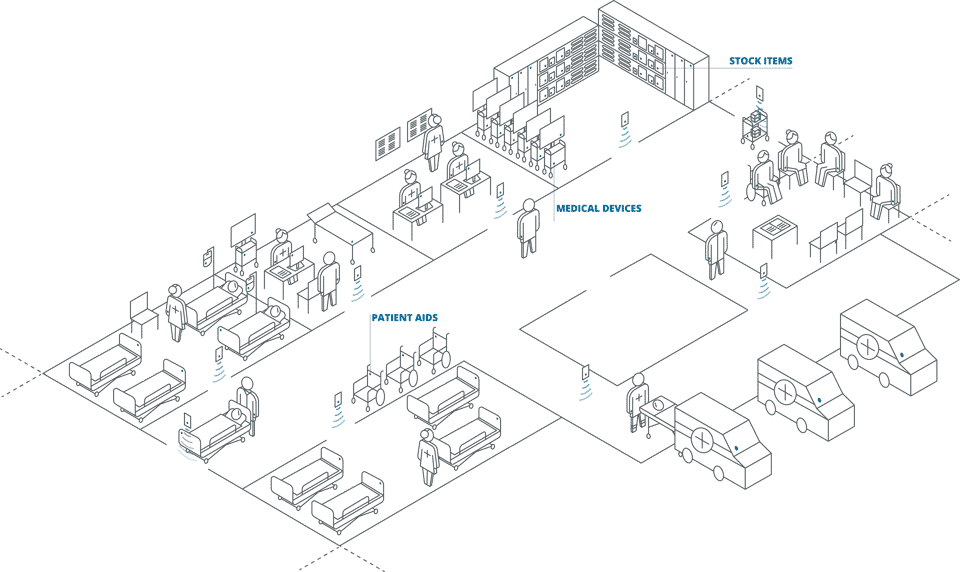What is patient flow management and why is it important?
Patient flow is the process of optimising the flow of patients through various stages of care, from admission to discharge, to ensure that patients receive timely and efficient treatment. Patient flow management is a critical aspect of healthcare administration that ensures the smooth coordination of patients through this journey.
The hospital is an interconnected, interdependent system that requires constant coordination to ensure proper and efficient care. Hospitals, especially big and busy ones, face significant challenges in managing patient flow due to the complexity of the system, which has thousands of moving parts.
To ensure quick, efficient patient flow while maintaining high standards of patient safety and care, healthcare providers must effectively match the appropriate type and number of resources to each admission at different stages of the patient care pathway. This is extremely complex, and the ramifications of poor patient flow are extensive, leading to long patient waiting lists, overcrowded hospitals, staff burnout and many more challenges. A report published by the British Medical Association in 2022 states that delays in patient flow can lead to increased stress and anxiety for patients, as well as longer hospital stays and higher healthcare costs. Poor patient flow has even been linked to an increase in mortality rates.
Ultimately, patient flow management is essential for ensuring that hospitals operate efficiently, effectively and with a focus on the best possible outcomes for patients.
How to improve patient flow management
An efficient patient flow system can reduce wait times, prevent delays and ensure timely care, thereby improving patient outcomes and patient satisfaction. It can also reduce the length of hospital stays, which can improve resource utilisation. This lowers the need for unnecessary procurement of medical devices and equipment, expansion of facilities and increased staff recruitment, which in turn reduces costs.
To achieve these benefits, hospitals can adopt intelligent technology, such as hospital asset tracking systems, to improve patient flow management. These technologies provide real-time visibility of the location and status of critical hospital assets, allowing healthcare providers to make data-driven decisions and optimize patient care.

From admission to discharge:
Improving patient flow through effective bed tracking
Bed tracking is an essential component of optimizing patient flow in hospitals as it supports the efficient management and delivery of admissions and discharges, bed cleaning and maintenance.
Bed tracking supports the entire patient journey. During admission, hospitals often struggle with locating available and appropriate beds for patients. A bed tracking system, like X-Tracking, provides visibility of all beds at the touch of a button, enabling hospitals to match a patient with the bed they need. It also supports the discharge of patients. Patient information can be quickly updated on the system, providing real-time information on which beds are available for other patients to use. This increases bed utilization and the flow of patients through the care pathway.
It's common for hospitals to lose beds due to the difficulty of managing hundreds and thousands of mobile medical assets simultaneously across many wards and departments. This can cause huge delays to cleaning and maintenance, and waste hours of clinical engineering staff time. With RFID bed tracking, patient flow can be further optimized by keeping track of the status of beds and where they are located, so they can be cleaned and maintained at the right time and go back into the system for patient use.
Most importantly, having a live and comprehensive overview of beds means hospital staff can spend less time finding beds and focus on what they do best – giving patients the treatment and care they need.
How our solutions can help you optimize patient flow
At Lyngsoe Systems, we offer X-Tracking™, a GS1 approved solution that allows you to track your hospital assets, including medical devices, hospital beds, sterile goods and safety equipment. Using radio frequency identification (RFID) technology and a web-based application, it enables you to track an unlimited number of assets at the same time, across multiple locations. It can be easily integrated with your existing hospital asset management systems, supporting the management of thousands of critical equipment.
Tracking key medical devices and equipment is vital to ensuring the timely maintenance of items and prevent faulty items from being used to treat patients. This improves patient flow as the required equipment can be easily located at the point of need, meaning patients can have an available bed assigned to them after admission and they can be treated more quickly with the appropriate equipment.
Team up with a leading healthcare logistics partner
Hospitals face significant challenges in managing patient flow, but smart hospital asset tracking solutions, such as X-Tracking™, can help hospitals improve the coordination of patient arrivals, treatment and discharges through the accurate tracking of medical devices and equipment. This helps healthcare providers to improve their operational efficiencies, reduce costs and, most importantly, increase patient safety and care.
Contact us to learn more about how our solutions can help you optimize your patient flow management and improve your patient outcomes.
Unveil how others are optimizing their patient flow management
Explore other use cases for X-Tracking